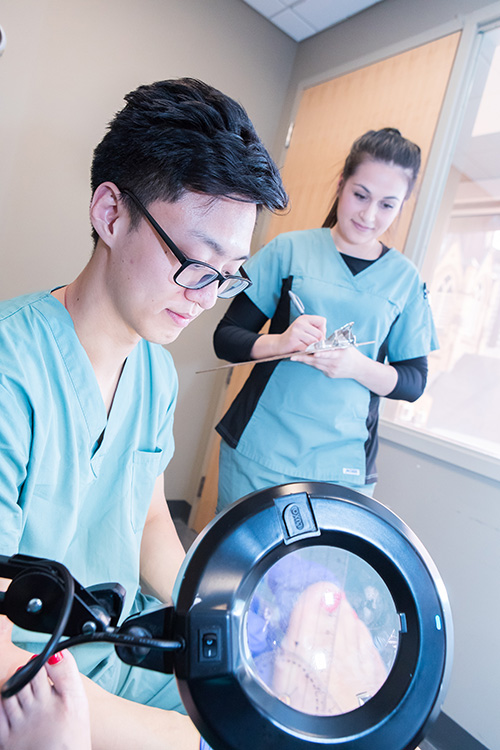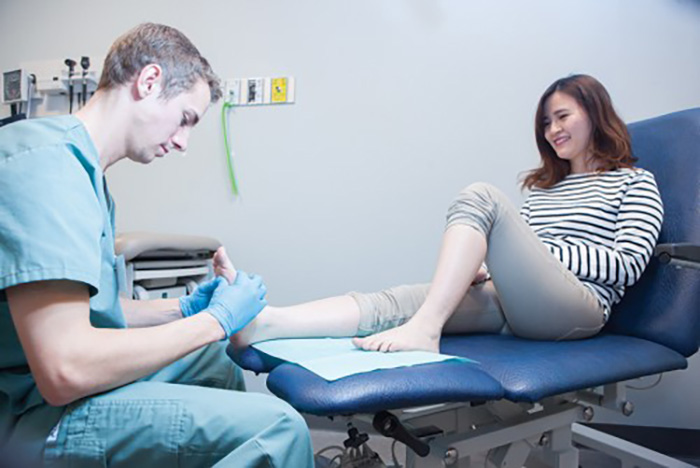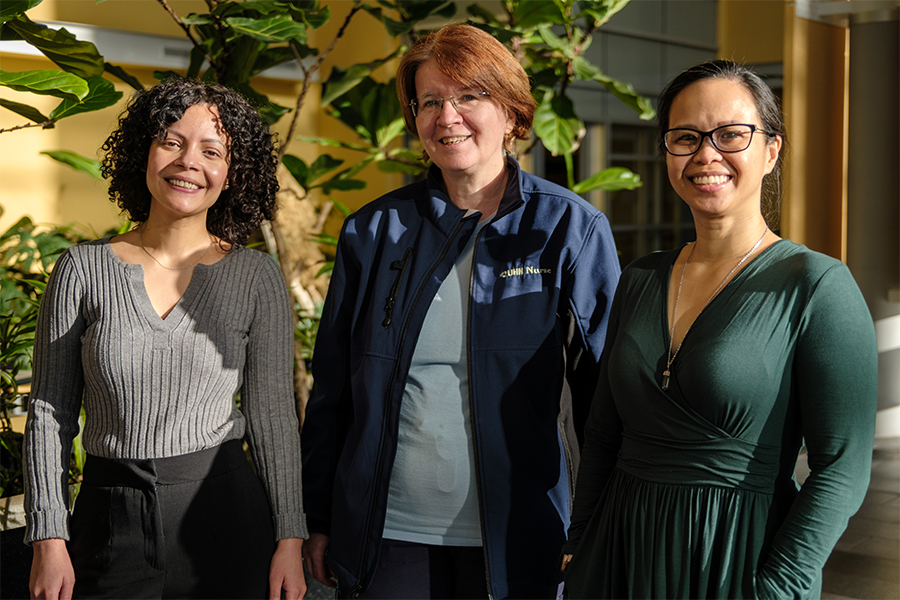
Sometimes the solutions to the trickiest problems are incredibly simple and just need to be seen from a different perspective.
A project led by UHN and tapping into a broad network of community care partners is aiming to literally save life and limb by encouraging people to ask a simple question of patients: may I see your feet?
Nearly 2.3 million Canadians over the age of 12 are living with diabetes, placing them at a 15 per cent to 25 per cent risk of developing a foot ulcer. If they do develop a foot ulcer, the chance of having an amputation in the next two to five years is more than 75 per cent. The rate of lower limb amputation is three times higher among Indigenous persons living with diabetes.
Further, about 70 per cent of patients who lose a limb will not survive beyond five years after their amputation, and 30 per cent will die within one year of amputation. Canada’s approach to preventing limb loss is not sufficient, as we have the highest rate of amputations among G7 countries.
“Best Foot Forward: Re-skilling Human Resources for High Risk Foot Care” is aiming to change that. By engaging with partners who work most closely with those at the highest risk of diabetic limb loss, such as the Indigenous Diabetes Health Circle (IDHC), community health centres, housing organizations and shelters for people experiencing homelessness, the goal is to get care sooner to those who need it.
“The idea is to expand our perception of who works in health care,” says Dr. Brian Hodges, a principal researcher on the project and Chief Medical Officer and Executive VP Education at UHN.
“Community workers and frontline staff at shelters who are not usually considered part of the health care workforce, and personal support workers who are, provide essential services that impact the health of some of the most structurally disadvantaged people,” he says. “The trusted relationships they have built with their patients can help connect them to these limb loss prevention resources.”

The Michener Institute of Education at UHN has both a Chiropody Program and an onsite Chiropody Clinic for clients in downtown Toronto providing support and some resources for the project.
These resources are aimed at upskilling other community partners – including Dixon Hall, Parkdale Queen West Community Health Centre (PWQCHC) and Niagara Medical Group – by helping them identify patients at risk and ask questions that could connect them with care before they’re at risk of losing a limb.
“Trust of a care provider is a key ingredient in making health care accessible for populations who often face stigma and discrimination – that is why upskilling the staff trusted by our clients to do foot care assessment is so responsive,” says Angela Robertson, Executive Director at PWQCHC.
“Our staff see daily the devastating impact of limb loss, the stress of potential loss and the long-term health impact of late intervention for the clients and communities we support,” Angela says. “That is why our staff working on the frontline of harm reduction, reception and client support roles with Indigenous Peoples, unsheltered populations and structurally marginalized populations are thrilled to be part of an effort that can directly prevent limb loss through early detection and intervention.”
Thus far, six foundational modules have been developed for community partner use, as well as a skills session that will enable care providers to perform a foot screening using the modified Inlow’s 60-second Diabetic Foot Screen validated tool from Wounds Canada.
The two-and-a-half-year project was funded through Future Skills Centre, a federal government initiative dedicated to helping Canadians gain the skills they need to thrive in a changing labour market.
The project is part of a broader collaborative effort – including the Conference Board of Canada’s VBHC Canada, in partnership with Diabetes Action Canada – to improve the management, treatment and outcomes of persons with diabetes as well as to enhance the efficiency of the health care system.


